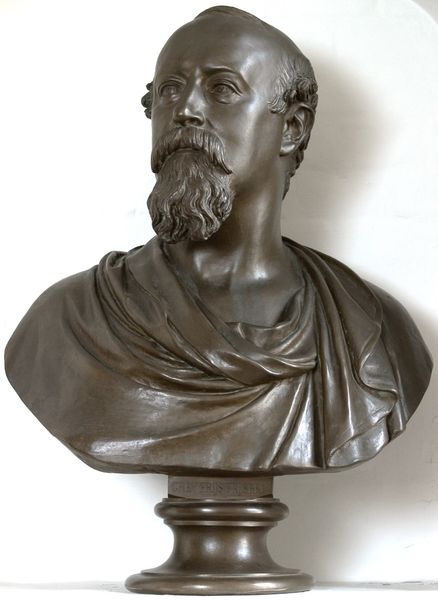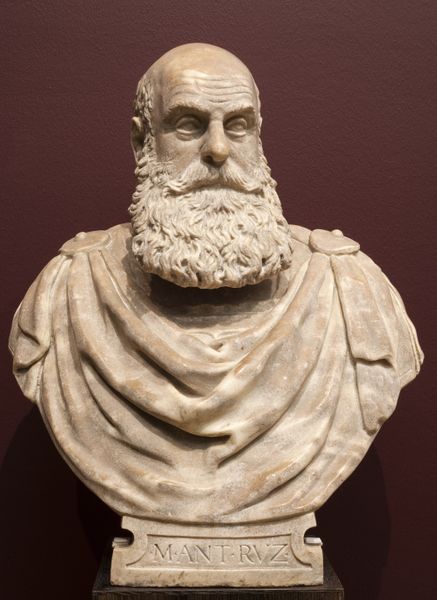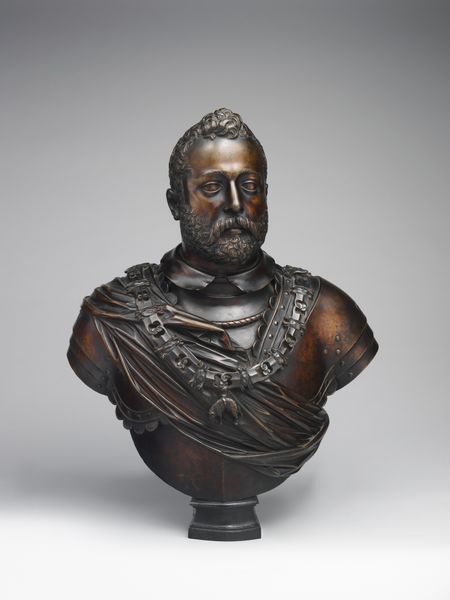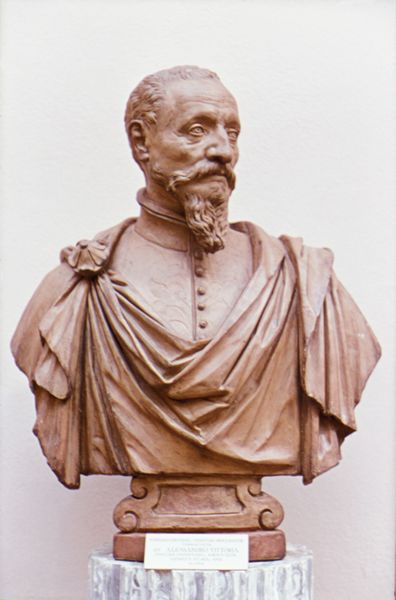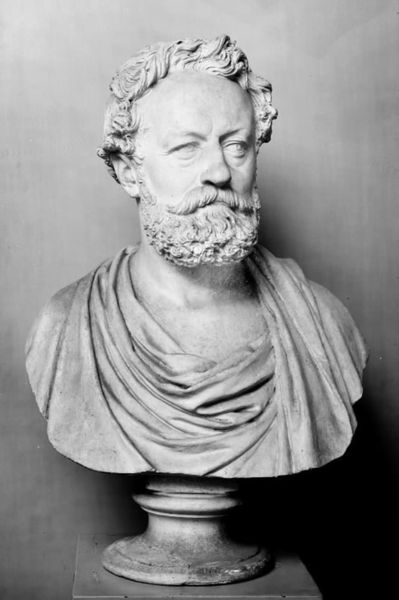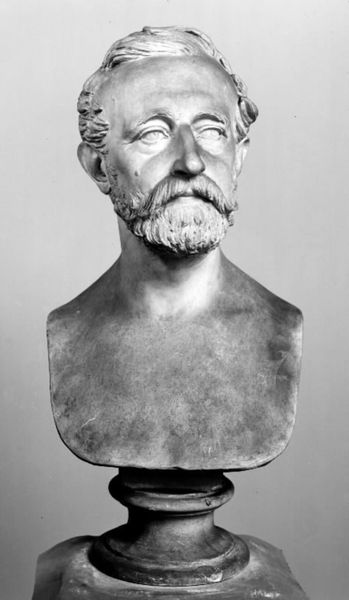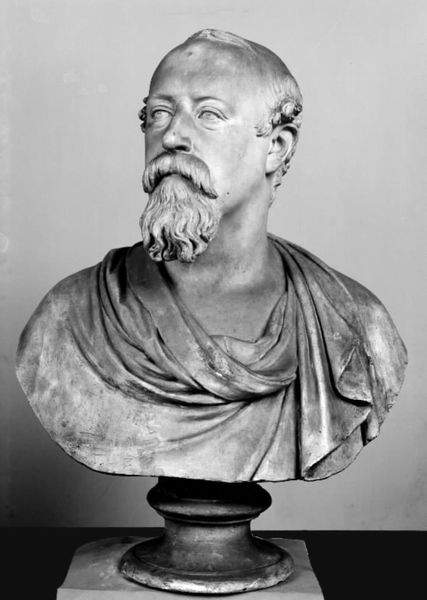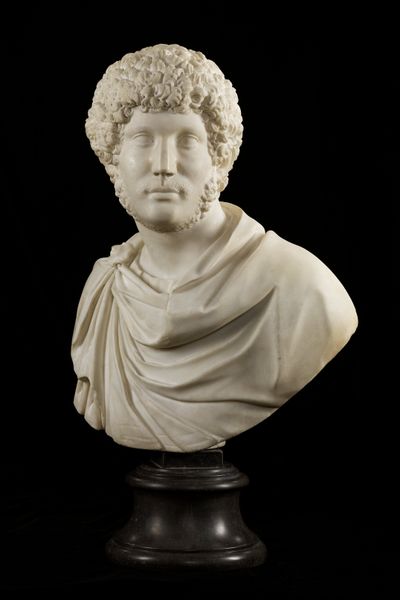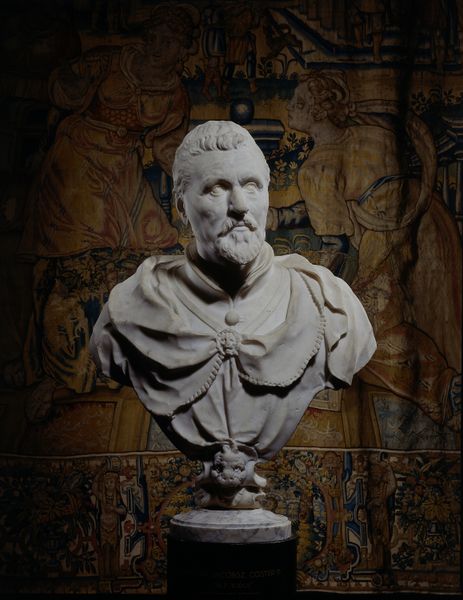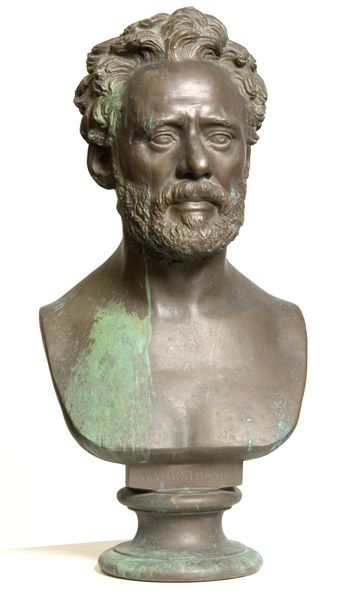
sculpture, marble
#
portrait
#
stone
#
sculpture
#
11_renaissance
#
sculpture
#
history-painting
#
decorative-art
#
marble
#
italian-renaissance
Dimensions: 38 3/8 × 25 in. (97.5 × 63.5 cm)
Copyright: Public Domain
Editor: Here we have Pompeo Leoni's marble bust of "King Philip II of Spain," crafted sometime between 1550 and 1599. It has such a severe presence. What strikes me most is that imposing, regal air—it almost feels like a frozen moment of immense power. What do you see when you look at this piece? Curator: Ah, yes, frozen power—I like that! The stillness of the marble, coupled with Philip's piercing gaze, it's a potent cocktail, isn't it? To me, it speaks of the burden of rule, the loneliness perhaps, of a man at the helm of a vast empire. Look at the subtle tension in his brow; do you see it? It's like a whisper of the weight he carried. Almost as if the artist chiseled not just stone, but a state of mind. What do you think that elaborate ruff around his neck tells us? Editor: Hmm, I hadn’t thought of that, the weight he carried. I was focusing on the outward show of strength. That ruff, though, it's interesting... ostentatious, maybe? It seems to trap his head, visually at least. Like he’s bound by the very symbols of his status. Is that too much of a read? Curator: Not at all! That tension between freedom and constraint is often what portraiture is about. I sometimes wonder if Philip himself felt suffocated by the crown. This work isn’t just marble, you know. To me, it embodies the inner life. You know, some say true power needs no adornment. But where's the fun in that, eh? Editor: This has completely shifted how I see this sculpture! It's not just a representation of a king; it's a window into a psyche. It gives an inside view that no one really knew existed. Curator: Precisely! And perhaps a glimpse into the universal experience of leadership – that eternal dance between obligation and the self. Who knew a cold, hard stone could be such a warm companion on a journey through power?
Comments
No comments
Be the first to comment and join the conversation on the ultimate creative platform.
